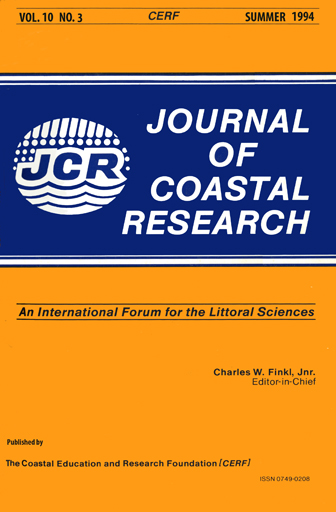Effects of Artificial Beach Nourishment on Nearshore Sediment Distribution (Island of Norderney, Southern North Sea)
Keywords:
Coastal protection, beach sands, sediment distribution, coastal erosion, beach replenishment, beach, shorefaceAbstract
The continuous erosion of the western spit led to artificial beach nourishment of the affected parts with sand. The aim was to ensure the stability of the solid coastal protection structures. The beach nourishment has been repeatedly carried out at irregular intervals since 1951. This paper reviews some effects of the last beach restoration on the sediment distribution in spring 1989. The beach was partly refilled with well sorted tine sand. The mean grain size of the original beach sediments was much coarser.
Sediment samples were taken twice yearly to obtain an overall view of long-term changes of the sediment distribution. Samples taken at monthly intervals, mainly in the problematic zone of severe erosion, gave information on short-term changes. The grain size distribution, carbonate and heavy mineral contents were determined.
At first, after the beach nourishment, a strongly decreasing grain size was detected, but soon reversed. Despite a selective erosion of finer sediment particles and the relative enrichment of coarser grains, the grain size spectrum of the beach refilling as it was before the replenishment was observed in the spring of 1991. The natural grain size distribution which is in an equilibrium with the hydrodynamic forces was produced by erosion of the beach material. The fine grained sand used as the refill is a "foreign" material that does not correspond to the boundary conditions at this site.
The examination of heavy minerals provides information about transport directions of the beach and shoreface sediments. It shows that the cross-shore transport is dominant within the groin-fields. The grain size of the sediments of the refilled area does not differ very much from those of the shoreface sediments, and thus this parameter is unsuitable for an analysis of the along-shore transport of the sediment. Although, an eastward and southward along-shore transport could be revealed from the refilled beach section after the nourishment. A survey of the beach and shoreface morphology provides additional information on the sediment transport and temporal sediment volume development.


